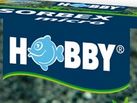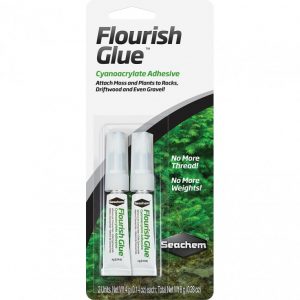Hobby Submersible Digital Thermometer
د.إ38.25 د.إ45.00
Related products
-
Aquascape Essentials, Aquascape Tools, Accessories
JBL PROSCAPE TOOL P 30 CURVED
0 out of 5(0)Size: Unit
JBL PROSCAPE
Angled pincers for plants and aquarium decorations
- Professional decoration and insertion of plants for the design of aquarium landscapes: angled pincers for aquascaping
- Easy to use: fatigue-free working thanks to its light weight: 75.3 g, length: 30 cm
- Protects plant: tips with cross corrugation, especially smooth surface: stainless high-quality steel, made in Japan.
- Maintenance tip: rinse with freshwater after use in saltwater
- Package contents: 1 pair angled pincers for aquascaping, Proscape Tool P curved
SKU: JB6155000 -
Aquascape Essentials, Aquascape Tools, Plants, Accessories
FLOURISH GLUE GEL TYPE 8G
0 out of 5(0)Size: 8 gFlourish Glue is a superior cyanoacrylate gel for attaching moss and plants to rocks, driftwood, and even gravel. It’s uniquely useful when planting bunch plants. Simply apply Flourish Glue, plant as usual and the plants stay rooted in the substrate. It bonds within seconds and has excellent control, hold and durability characteristics. It can even be used underwater. Flourish Glue can be used for any aquascaping in freshwater or saltwater aquariums or for any plastics repairs.
KEY FEATURES:
- Cyanoacrylate adhesive
- Attach moss and plants to rocks, driftwood, and even gravel
- No more thread, no more weights
- Bonds within seconds
- Can be used underwater
DIRECTIONS:
Dispense a small amount of glue prior to each use. Apply a small amount of glue to moss or plant roots and press against desired surface for 20 seconds. For bunch plants, apply glue and plant as usual. Wipe tip free of glue before replacing the cap.SKU: SE3116 -
Accessories, Manitanance Equipment & Cleaning
HYDROTOTE 20L
0 out of 5(0)Size: 20 LHydroTote is the ideal space saving alternative for shops carrying current 5 gallon hard jugs that simply consume too much space in the home, office, or pet store.
The HydroTote is a collapsible jug that holds up to 20L (5 US gallons). It’s perfect for customers that get their saltwater, RO water, or DI water at their local fish store. When not in use, it folds and compresses to take up less space. It pours easily and can withstand a drop of up to 3 meters while full.
KEY FEATURES:
- Capacity: 20L (5 US gallons)
- Material: Low-density polyethylene
- Length: 28cm (11 inches)
- Width: 28cm (11 inches)
- Height (with handle): 33cm (13 inches)
- Weight (filled): 18kg (42lbs)
- Faucet Spout: Yes
SKU: SE3113







